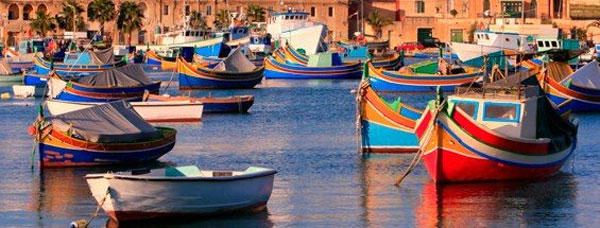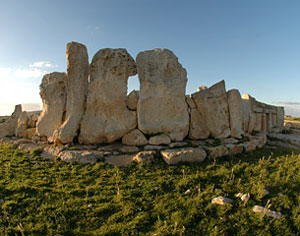Reply To:
Name - Reply Comment

An archipelago nation, the islands that comprise the country of Malta are situated in the heart of the Mediterranean, around 100km south of Sicily and 300km east of Tunisia.
Malta’s strategic location – between the Straits of Gibraltar and the Suez Canal – has afforded it great importance throughout history, and the islands have been ruled at one time or another by the Phoenicians, Greeks, Romans, Sicilians, French and British.
During World War II Malta – at the time under British control – played a vital role and was collectively awarded the George Cross, the first time a country had received such an honour. A replica of the George Cross now appears in the upper hoist corner of the Maltese flag. Malta eventually became independent from the United Kingdom in 1964, and declared itself a Republic a decade later.
Present day Malta is best known for being a popular tourist destination, and each year it welcomes 1.2 million tourists – three times the country’s population – keen to enjoy its history, architecture and, of course, beaches.
 Attractions
Attractions
It’s said that size isn’t everything, and Malta is a case in point. This tiny island nation (all 316 square kilometres of it) is packed with attractions, including no less than nine UNESCO World Heritage Sites.
When UNESCO granted World Heritage listing to Valletta, it declared it “one of the most concentrated historic areas in the world”, and the capital is renowned worldwide for its architectural excellence. Visit the Museum of Archaeology, the impressive Grand Master’s Palace and St. John’s Co-Cathedral where you can see Caravaggio’s only signed painting, The Beheading of St. John The Baptist.
Valletta overlooks the impressive Grand Harbour, across which lies Cottonera; the Three Cities of Senglea, Cospicua and Vittoriosa. Older than Valletta, they offer a fascinating insight into Malta's maritime fortunes. Head inland to visit Mdina, the ancient capital of Malta, and a medieval walled town known to the Maltese as the Silent City. Gaze at the impressive Cathedral of the Conversion of St Paul; it is fronted by a large square and is spectacular.
Also dotted across the country are the Megalithic Temples of Malta, a series of prehistoric monuments of which seven are UNESCO World Heritage Sites. At more than six thousand years old, they are said to be some of the oldest free-standing structures in the world.
Dining and Nightlife
Malta’s location, less than 100km south of Sicily, ensures that its local cuisine borrows heavily from Italy. In addition to the Sicilian input, Maltese dining is influenced by other regions including the Mediterranean and the Maghreb. Aljotta, a fish broth with plenty of garlic, herbs and tomatoes, is the Maltese version of the Mediterranean dish, bouillabaisse, while a classic Maltese dish is fenek: rabbit slow-cooked in garlic and wine.
As a popular holiday destination, Malta’s main tourist areas cater for the global palates of international visitors. However, unless you want anglicised options such as bangers and mash or fish and chips, it pays to avoid many of Malta’s holiday resort areas.
Valletta has numerous restaurants. People watch with a pastizzi (pastries filled with ricotta or peas) at the city’s Republic Square, or enjoy fine dining in the new Waterfront development. Alternatively, enjoy the island’s superb seafood at upmarket bougainvillea-clad restaurants by the water's edge in the tourist favourites of St. Julian's and Sliema.
Malta is teeming with nightlife options, most of which can be found in Paceville, just north of St. Julian’s. The bustling atmosphere of the bars and clubs attracts a young crowd, especially on weekends.
Beyond Malta
Take a ferry from Ċirkewwa on Malta Island for the short trip to Comino. The smallest of Malta’s three inhabited islands, Comino is a favourite destination courtesy of the Blue Lagoon, a stunning bay which features exceedingly clear and azure-blue water. Beware: it can get very busy during peak season.
For a slightly quieter excursion, take a ferry to the island of Gozo. Its spectacular west coast features sights such as the Azure Window (a rocky outcrop with a hole worn through the cliff face), the Inland Sea (a small lake connected to the sea via a 100 metre-long tunnel) and the Blue Hole (one of Europe’s finest dive spots).
Emirates operates daily flights to Malta from our hub Dubai using a state-of-the-art fleet. Discover Emirates comfortable inflight offerings on Malta flights, which include luxurious sleeper seats in First Class, spacious sleperettes in Business Class and extra legroom in Economy Class. All Emirates flights to Malta feature hundreds of entertainment channels in every class, including the latest movies and TV shows from around the world. Passengers travelling in First Class or Business Class on flights to Malta can take advantage of our complimentary Chauffeur-drive service.